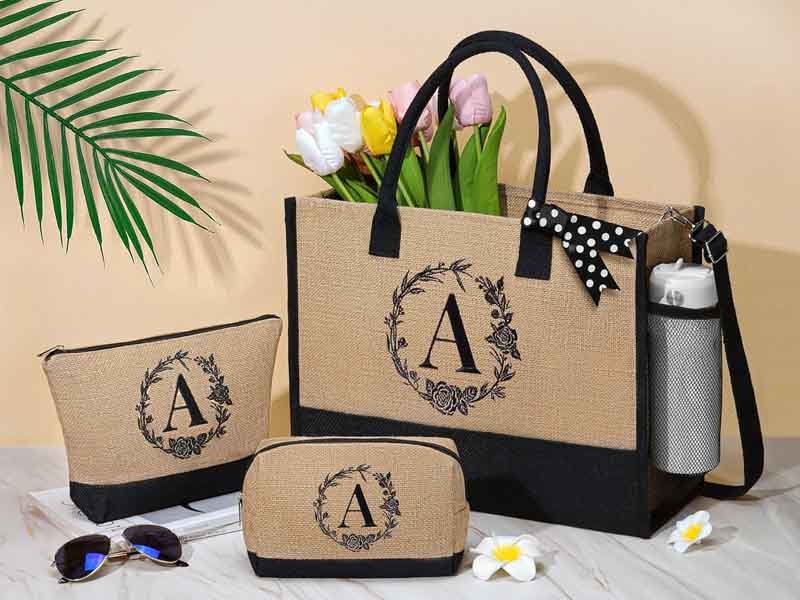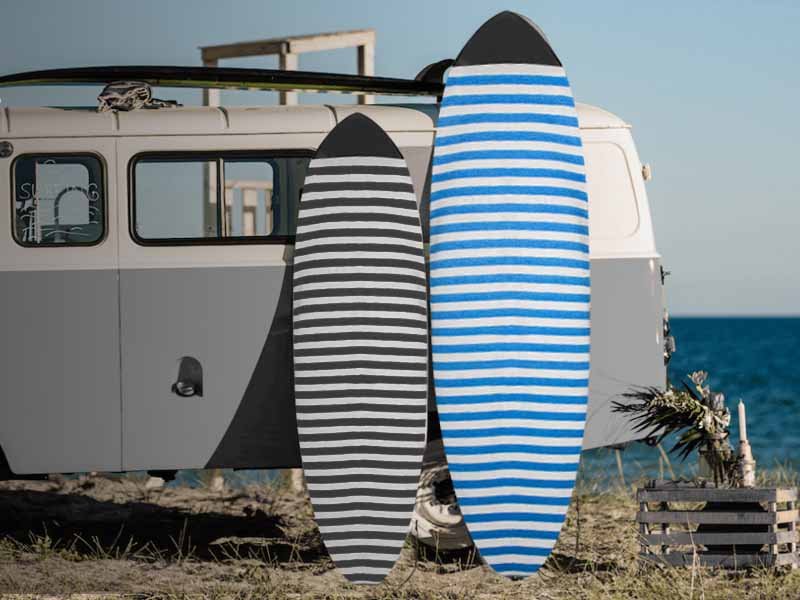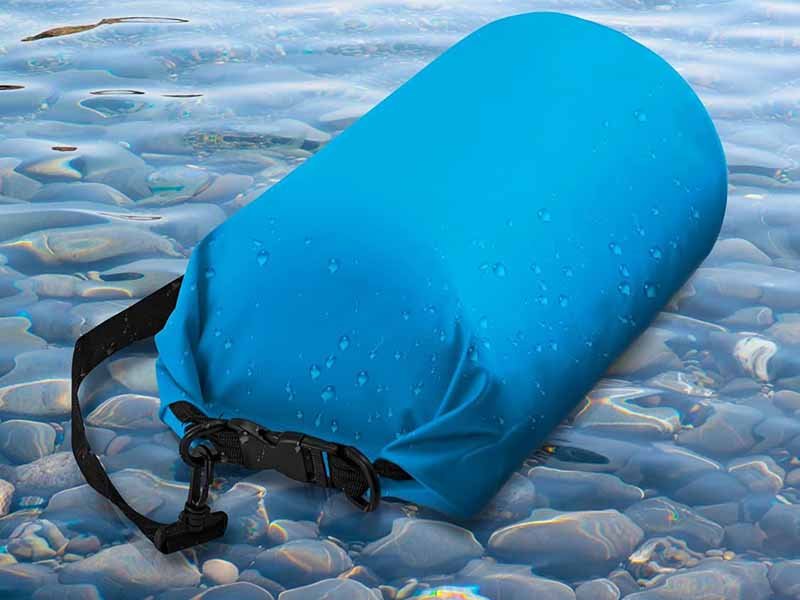In an age when consumers scrutinize every purchase for its environmental footprint, jute bags have emerged as the poster child for sustainable packaging. From bustling farmers’ markets to high-end boutiques, these sturdy, natural-fiber totes not only carry your goods but also carry a message: “We care about the planet.”
Jute bags are crafted from the long, golden fibers of the jute plant—one of the most eco-friendly crops on Earth. Thanks to jute’s rapid growth, minimal pesticide needs, and full biodegradability, these bags decompose naturally within months. They combine the strength to haul groceries with the style to serve as premium branded merchandise—making them a go-to choice for businesses aiming to marry functionality, aesthetics, and green credentials.
Intrigued? Let’s unpack how jute goes from plant to purse—and why that matters for your brand.
What Is the Difference Between a Jute Bag and a Tote Bag?
While “tote” broadly describes any open-top bag with handles, a jute bag specifically uses jute fiber as its core material. This distinction matters because jute imparts unique strength, textured aesthetics, and a smaller environmental footprint compared to cotton, canvas, or synthetic totes.
Jute’s native tensile strength,up to 14 MPa—outclasses cotton’s 3–5 MPa, enabling jute bags to carry heavier loads without tearing. Furthermore, jute cultivation requires minimal pesticides and up to 90% less irrigation than cotton, making it a more sustainable choice right from the field.
Fiber Characteristics & Soil Conditions
- Jute thrives in well-drained, waterlogged soils of eastern India and Bangladesh, yielding long fibers (2–4 m) ideal for coarse weaving.
- Cotton grows in diverse climates but demands heavy fertilization and irrigation, affecting water tables in major growing regions.
Production Costs & Yield Rates
- Average jute yield: 2–2.5 tonnes per hectare; fiber extraction cost: $0.45–0.60/kg.
- Cotton yields: 1.5–2 tonnes/ha, extraction cost: $1.20–1.70/kg due to ginning and waste.
End-Use Durability & Shelf Life
- Jute bags last for 2–3 years with daily use; tensile retention remains above 80% after 200 washes or cleanings.
- Cotton totes show similar wear after ~100 washes; synthetic totes may last longer but at environmental cost.
Brand Storytelling Potential
- Emphasize jute’s natural origins and community impact: 3 million farmers rely on jute cultivation for income.
- Consumer studies show a 40% preference for packaging with clear environmental benefits over generic options.
Comparing Tote Materials
| Material | Eco Impact | Tensile Strength | Hand Feel | Typical Uses |
|---|---|---|---|---|
| Jute | High (biodegradable) | 12 N/mm | Coarse, rustic | Grocery, promotions |
| Cotton | Moderate (water use) | 8 N/mm | Soft, comfortable | Fashion, lightweight totes |
| Canvas | Moderate | 10 N/mm | Sturdy, textured | Retail, casual everyday use |
| Polyester | Low (non-biodeg.) | 15 N/mm | Smooth, synthetic | Sports, outdoor gear |
| RPET | High (recycled content) | 12 N/mm | Similar to polyester | Eco-branded items |
- Production Water Use
- Cotton: ~10,000 L/kg fiber vs. Jute: ~900 L/kg fiber.
- Polyester: ~2,700 L/kg fiber.
- End-of-Life
- Jute: Fully compostable.
- Cotton/Canvas: Compostable but slower.
- Synthetics: Persist for decades.
How Are Jute Bags Manufactured: From Fiber to Finished Product?

Jute is a bast fiber harvested from the stems of Corchorus plants, spun into yarn, and woven into coarse, burlap-style fabric. After weaving, the fabric is cut, sewn, and finished—often with interior linings or coatings—to create durable, eco-friendly bags that can be customized with prints, embroidery, or trims.
The journey from jute stalk to retail-ready bag involves meticulous steps to ensure fiber integrity, product consistency, and design precision.
1. Fiber Harvesting & Retting
- Cultivation Cycle: Jute plants mature in 120–150 days under monsoon conditions.
- Retting Process: Bundles of cut stalks are submerged in slow-moving water (rivers or tanks) for 10–15 days. Microbial action breaks down pectin, loosening fiber without compromising tensile strength.
- Quality Control: Fibers tested for moisture (optimal 12–14%) and color uniformity.
2. Fiber Extraction & Washing
- Stripping: Skilled labor or mechanical decorticators strip bark from stalks to release long fibers.
- Washing & Drying: Fibers washed in running water to remove pectin and plant debris, then sun-dried for 5–7 days to prevent mold.
3. Spinning & Yarn Formation
- Carding & Combing: Fibers aligned to remove short strands; combed fibers produce smoother yarn.
- Ring Spinning: Yarn twist adjusted (10–15 twists/inch) to achieve the balance between strength and flexibility; counts range from 8s to 22s (metric).
4. Weaving Techniques
- Loom Types: Shuttle looms deliver denser weave, whereas rapier looms increase speed.
- Weave Patterns: Plain weave (1×1) for cost-effective runs, twill weave (2×2) for enhanced drape and durability.
5. Cutting, Stitching & Assembly
- Die-Cutting: Automated dies ensure precise panel shapes—key for consistent dimensions in bulk orders.
- Reinforced Seams: Double-chain stitching at stress points (handles, bottom gussets) withstands 20% higher load capacity than single-stitch.
6. Finishing & Surface Treatments
- Coatings: PU or acrylic lamination adds water resistance (up to 80% hydrophobicity) while preserving breathability.
- Edge Binding & Handles: Heat-bonded or stitched binding for clean edges; handles can be twisted jute rope, cotton webbing, or vegan leather.
7. Quality Checks & Packaging
- In-Line Inspection: AQL Level II sampling checks for stitching defects, color consistency, and dimensional accuracy.
- Final Audit: Pre-shipment audits with photo/video documentation; carton markings per buyer requirements.
What Customization Options Can You Offer on Jute Bags?

Customization transforms a simple jute bag into a brand statement. From bold visual effects to functional add-ons, the palette of options is vast.
Printing & Branding
- Screen Printing: Ideal for bold, flat-color logos; supports up to 8 PMS colors with 0.1 mm registration accuracy.
- Digital Printing: Enables photographic imagery and gradients; resolution up to 600 dpi on coated jute surfaces.
- Heat Transfer & Embroidery: Offers raised textures and metallic foils for premium feel.
Color & Material Variations
- Pantone-Dyed Jute: Base fiber dyed before spinning; colorfastness grade 4 in rubbing tests.
- Handle Materials: Choose from 100% cotton webbing (soft), twisted jute rope (rugged), vegan leather (luxury), or nylon straps (sporty).
Structural Enhancements
- Lining & Insulation: Add non-woven PP lining for shape retention or aluminum foil lining for cooler bags.
- Pockets & Compartments: Internal zippers, patch pockets, or detachable pouches increase utility.
Hardware & Accessories
- Closures: Magnetic snaps, drawstrings with cord locks, or zippered openings.
- Decorative Add-Ons: Tassels, beads, woven labels, and metal grommets elevate perceived value.
Packaging & Presentation
- Poly-Bag Options: Biodegradable poly, resealable ziplock, or full-color foil bags.
- Gift-Box Kits: Printed rigid boxes with foam inserts—perfect for corporate gifting.
How Do You Evaluate and Select a Jute Bag Supplier?
Your supplier is your partner in brand success. Beyond price, assess their technical capabilities, ethical standards, and project management.
Key Evaluation Criteria
- MOQ & Lead Time:
- Low-volume runs (300–500 units) with 15–20 day sample and production cycles.
- High-volume discounts (over 5,000 units) reduce lead times to 25–30 days total.
- Pricing & Payment Structure:
- FOB pricing with transparent breakdown: fiber cost, labor, overhead, shipping.
- Standard terms: 30% deposit, balance at B/L; consider letter of credit for large orders.
- Certifications & Audits:
- Look for BSCI, ISO 9001, GOTS for organic jute and social compliance.
- Request recent audit reports and corrective action plans for nonconformities.
- Communication & Technology:
- Use of PLM systems for real-time sample/trial tracking.
- Dedicated account manager with 24 hr response SLA and weekly status calls.
- Sustainability Practices:
- Water recycling in retting, solar-powered drying sheds, and waste fiber reprocessing.
- Why Partner with Szoneier for Custom Jute Bags?
- 18+ years of vertical integration: fiber sourcing, spinning, weaving, printing, finishing, packaging.
- Low MOQ of 100, rapid prototyping in 5 days, ISO 9001 quality management, and full compliance with EU chemical standards (REACH).
Are Jute Bags Truly Sustainable and Biodegradable?

Sustainability claims are only as strong as the data backing them. Jute’s environmental credentials stack up impressively in lifecycle analyses.
Environmental Metrics
- Carbon Sequestration:
- Jute fields absorb 3–4 tonnes CO₂ per hectare yearly, compared to 1 tonne for tree plantations.
- Water Use Efficiency:
- Jute cultivation uses 300–350 L water per kg fiber vs. 10,000 L for cotton.
- Pesticide & Fertilizer Needs:
- Nearly pesticide-free; requires minimal synthetic fertilizers.
- Biodegradability:
- Decomposes fully in 9–12 months under home composting conditions; industrial compost in 3–6 months.
- End-of-Life Options:
- Collection and shredding into insulation, geotextiles, or mulch, extending utility beyond original use.
Comparative Lifecycle Table
| Material | CO₂ Sequestration (t/ha) | Water Footprint (L/kg) | Pesticide Use | Biodegradability |
|---|---|---|---|---|
| Jute | 3–4 | 300 | Minimal | 12 months |
| Cotton | 0.5–1 | 10,000 | High | 24 months |
| PP Nonwoven | 0 | 100 | N/A | Non-biodegradable |
Which Industries and Applications Benefit Most from Jute Bags?
From upscale boutiques to bustling bazaars, jute bags adapt to diverse brand needs and use cases.
Industry Use Cases
- Retail & Fashion:
- Designer labels use Pantone-matched jute totes for limited-edition releases; 60% of Gen Z shoppers cite packaging as a purchase driver.
- Food & Grocery:
- Supermarkets replace plastic produce sacks with jute mesh bags; reduces plastic waste by 75% per store monthly.
- Events & Conferences:
- Conference kits with branded zippered jute portfolios; eliminates disposable swag bags entirely.
- Corporate Gifting:
- Eco-themed gift sets—jute wine carriers paired with local wine—boost corporate gifting ROI by 18%.
- Hospitality & Tourism:
- Hotel turn-down gifts include personalized jute beach totes; guests perceive a 4-star upgrade.
Product Variations in Market
- Grocery Totes: Open-top, gusseted bases for bulk produce.
- Drawstring Pouches: Ideal for jewelry or small accessories.
- Zippered Laptop Bags: Padded inserts for electronics protection.
- Wine & Bottle Carriers: Reinforced bottoms and sturdy rope handles.
- Promotional Swag Bags: Lightweight, low-cost giveaways for brand exposure.
How Can You Ensure Quality Control for Bulk Jute Bag Orders?

Maintaining consistent quality in bulk production requires rigorous checks at every stage, from raw materials to final packing.
Incoming Material Inspection:
- Random sampling of fiber coils—tensile strength tests (minimum 8 kgf) and moisture checks.
In-Line Production Monitoring:
- AQL Level II inspections every 1,000 units; focus on stitch density (minimum 8 stitches per cm) and seam strength.
Third-Party Lab Certifications:
- SGS reports for heavy metals, microbial contamination, and colorfastness (grade 4+ in ISO 105-X12).
Pre-Shipment Approval:
- Buyer reviews 3–5% carton sample photos/videos; final approval triggers mass shipment.
Post-Shipment Feedback Loop:
- Collect defect data, implement corrective action plans, achieve <0.5% defect rate.
Do Jute Bags Deliver a Strong ROI for Your Brand?

Investing in premium jute bags may seem costlier upfront, but a detailed cost-per-use and brand-impact analysis reveals substantial long-term gains.
Cost-Per-Use & Value Metrics
| Bag Type | Unit Cost | Estimated Lifespan | Cost-Per-Use |
|---|---|---|---|
| Jute | $1.80 | 600 uses | $0.003 |
| Plastic | $0.05 | 1 use | $0.05 |
Why Are Jute Bags So Expensive?
- Manual retting, specialized spinning, eco-certifications, and limited mechanization elevate costs by 20–30% over basic cotton.
How Long Do Jute Bags Last?
- Real-world trials: daily usage for 18 months before noticeable wear; UV-treated bags extend life to 24 months.
What Are the Disadvantages of Jute Bags?
- Prone to mildew if stored damp; coarser texture can limit certain brand aesthetics; batch color variance possible without tight dye controls.
Brand Impact Statistics
- 72% of retailers report increased brand loyalty when switching to eco-friendly packaging.
- 28% rise in social media mentions linked to sustainably packaged products.
Conclusion & Inquiry
You’ve seen how jute bags marry functionality with environmental stewardship, customization with cost-effectiveness, and durability with design flair. Now, it’s your turn to harness this versatile packaging solution for your brand.
Reach out to Szoneier today for complimentary prototyping and see firsthand how our 18+ years of vertical integration, rapid sampling, and eco-certified processes can bring your custom jute bag vision to life. Send us your specifications, and let’s create packaging that carries your brand—and your values—forward.






